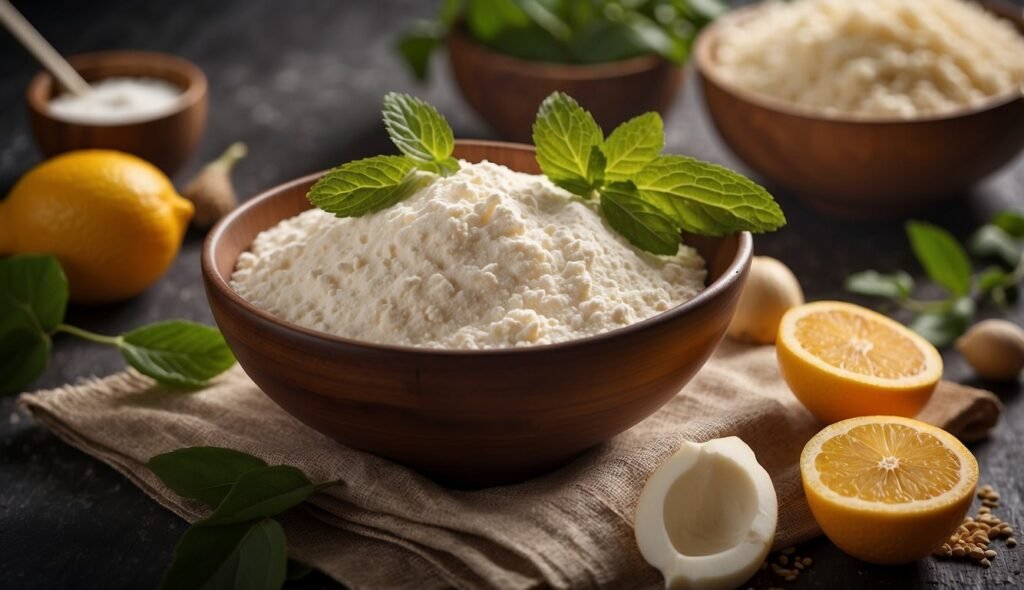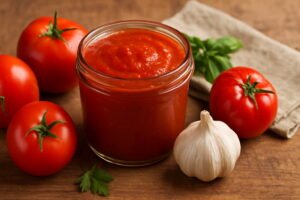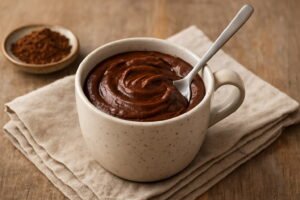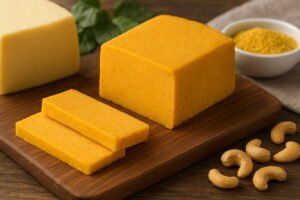If you’re following a paleo diet, you may be wondering what types of flours you can use as a substitute for traditional wheat flour. One popular option is tapioca flour, also known as tapioca starch. Tapioca flour is made from the starchy root of the cassava plant, which is native to South America. It’s a versatile ingredient that can be used in a variety of paleo-friendly recipes.
Tapioca flour is a great choice for paleo baking because it’s grain-free and gluten-free. It’s also low in calories and high in carbohydrates, making it a good source of energy for those following a paleo diet. Tapioca flour is also a good source of dietary fiber, which can help keep you feeling full and satisfied after meals. Additionally, it has a neutral flavor, which means it won’t overpower other ingredients in your recipes.
When using tapioca flour in paleo recipes, it’s important to keep in mind that it doesn’t have the same binding properties as wheat flour. This means you may need to use other ingredients, such as eggs or xanthan gum, to help hold your recipes together. However, with a little experimentation, you can create delicious paleo-friendly baked goods using tapioca flour.
What Is Paleo Tapioca Flour
If you’re following the paleo diet, you may be wondering if tapioca flour is a good option for you. Tapioca flour is derived from the cassava root, which is native to South America. It is a popular ingredient in gluten-free baking due to its starchy texture and neutral taste.
Origins and Paleo Diet Compatibility
Tapioca flour is considered paleo-friendly because it is a whole food that is minimally processed. The cassava root is peeled, grated, and then the starch is extracted and dried to create tapioca flour. It is free from grains, gluten, and dairy, making it a versatile ingredient for those with dietary restrictions.
However, it’s important to note that tapioca flour is high in carbohydrates and low in nutrients. While it can be a useful ingredient in moderation, it should not be the sole source of carbohydrates in your diet. It’s best to pair tapioca flour with other paleo-friendly flours, such as almond flour or coconut flour, to create a more balanced and nutrient-dense baked good.
Nutritional Profile
Tapioca flour is a good source of carbohydrates, providing approximately 23 grams per 1/4 cup serving. It is also low in fat and protein, making it an ideal ingredient for those looking to add bulk and texture to their baked goods without adding extra calories.
While tapioca flour does not provide a significant amount of vitamins or minerals, it is a good source of resistant starch. Resistant starch is a type of carbohydrate that resists digestion in the small intestine and feeds the beneficial bacteria in your gut. This can lead to improved digestive health and a stronger immune system.
Overall, tapioca flour can be a useful ingredient in a paleo diet when used in moderation and paired with other nutrient-dense flours. It provides a starchy texture and neutral taste that can enhance the texture and flavor of your baked goods.
Culinary Uses of Paleo Tapioca Flour
Paleo tapioca flour is a versatile ingredient that can be used in a variety of dishes. Here are some ways to use it in your cooking:
Gluten-Free Baking
Paleo tapioca flour is a great alternative to wheat flour for those following a gluten-free diet. It can be used in baking to make bread, muffins, pancakes, cakes, and more. When baking with tapioca flour, it is important to note that it has a different texture and behavior than wheat flour. It is best to use it in combination with other gluten-free flours, such as almond flour or coconut flour, to get the best results.
Here is a simple recipe for paleo bagels that use tapioca flour:
- In a large bowl, combine 1 1/2 cups blanched superfinely ground almond flour, 3 1/2 cups tapioca starch/flour, and 1 teaspoon kosher salt.
- Add 1 tablespoon active dry yeast and whisk again to combine.
- In a small bowl, whisk together 1 tablespoon honey and 1/2 cup warm water until the honey is dissolved.
- Add the honey mixture to the flour mixture and stir until a dough forms.
- Divide the dough into 8 equal pieces and shape each piece into a bagel shape.
- Bring a large pot of water to a boil and add 1 tablespoon honey.
- Add the bagels to the boiling water and cook for 1-2 minutes on each side.
- Remove the bagels from the water and place them on a baking sheet lined with parchment paper.
- Bake the bagels at 375°F for 20-25 minutes, or until golden brown.
Thickening Agent for Sauces and Soups
Tapioca flour can also be used as a thickening agent for sauces and soups. It has a neutral flavor and can thicken liquids without adding any taste. To use tapioca flour as a thickener, simply mix it with a small amount of cold liquid until it forms a slurry, then add it to the hot liquid and stir until it thickens.
Here is a simple recipe for a paleo-friendly gravy that uses tapioca flour as a thickener:
- In a small bowl, whisk together 1/4 cup tapioca flour and 1/2 cup cold water until a slurry forms.
- In a saucepan, heat 1 cup chicken or beef broth over medium heat.
- Add the tapioca slurry to the broth and whisk until it thickens.
- Season the gravy with salt and pepper to taste.
In conclusion, paleo tapioca flour is a versatile ingredient that can be used in a variety of dishes. Whether you are baking gluten-free treats or thickening sauces and soups, tapioca flour is a great ingredient to have in your pantry.
Buying and Storing Tips
Where to Buy
When it comes to buying paleo tapioca flour, you have a few options. You can find it in most health food stores, specialty stores, or online. It is important to read the labels and make sure that the tapioca flour you are buying is 100% pure tapioca flour. Some brands may mix it with other flours or additives, which is not ideal for a paleo diet.
Storage Recommendations
Once you have purchased your paleo tapioca flour, it is important to store it properly to maintain its freshness and quality. Here are some tips:
- Airtight Container: Tapioca flour should be stored in an airtight container to prevent moisture and other contaminants from affecting the flour. This will help to keep the flour fresh and prevent it from clumping together.
- Cool, Dry Place: Tapioca flour should be stored in a cool, dry place, away from direct sunlight. Exposure to light and heat can cause the flour to spoil faster and lose its quality.
- Refrigeration or Freezing: If you live in a humid or warm climate, it may be necessary to refrigerate or freeze your tapioca flour to extend its shelf life. When stored in a sealed container, tapioca flour can last up to six months in the refrigerator and up to a year in the freezer.
By following these simple tips, you can ensure that your paleo tapioca flour stays fresh and of high quality for all your paleo baking needs.



